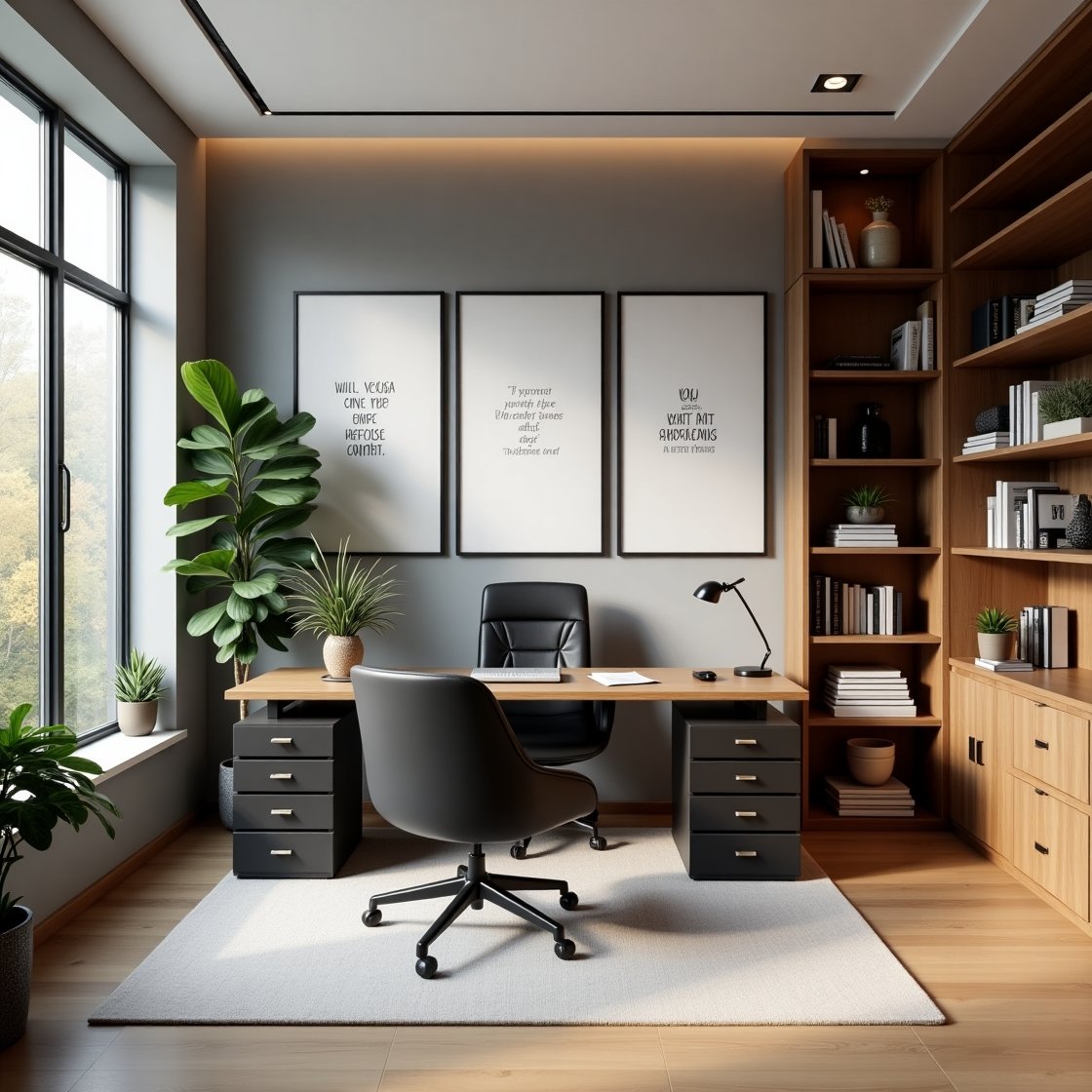As remote work and hybrid schedules become the norm, having a dedicated home office is no longer a luxury — it’s a necessity. But working from home doesn’t mean settling for an uninspiring corner. A well-designed home office can boost your productivity, creativity, and overall well-being.
In this article, we’ll explore how to create a stylish, comfortable, and functional home office, whether you have an entire room or just a small nook. From layout and lighting to ergonomics and decoration, you’ll learn how to design a space that works — and works for you.
1. Choose the Right Location
Before anything, determine where your home office will live. Ideally, it should:
- Be quiet and away from distractions
- Have good natural light
- Offer privacy for meetings or focus time
Options:
- A spare bedroom converted into a full office
- A corner of the living room with a stylish divider
- A converted closet or “cloffice” for tight spaces
- A spot near a window for natural motivation
Pro tip: Try to avoid working from bed or the dining table long term — it affects posture and productivity.
2. Invest in the Right Desk
The desk is the foundation of any home office. Choose one that:
- Fits your space and layout
- Offers enough surface area for your tasks
- Has built-in storage or cable management if possible
Great options:
- Standing desks or adjustable models for posture flexibility
- Wall-mounted desks for minimal spaces
- L-shaped desks for multitasking or dual monitors
Stick with neutral colors or wood tones to keep the visual flow calm and professional.
3. Prioritize an Ergonomic Chair
A good chair is not optional — it’s your body’s support system for long hours.
Look for a chair with:
- Adjustable height and armrests
- Lumbar support for your lower back
- A padded seat with breathable fabric
- Swivel and wheels for easy movement
If you’re short on space, a compact ergonomic chair is better than a stylish but uncomfortable one.
4. Plan Your Lighting Like a Pro
Lighting affects mood, energy, and focus. The best home offices combine:
- Natural light (set up near a window if possible)
- Task lighting (like a desk lamp with adjustable angles)
- Ambient lighting (ceiling lights or wall sconces)
Use warm white bulbs (3000K–4000K) for a balance between comfort and clarity.
Bonus tip:
Place your monitor perpendicular to windows to reduce glare.
5. Organize with Intention
Clutter is the enemy of focus. Build a system that’s both clean and easy to maintain.
Storage solutions:
- Floating shelves or wall-mounted organizers
- A drawer unit under the desk
- Desk trays for sorting papers and supplies
- Cable organizers to keep wires hidden
Use labeled boxes or containers for small items and don’t overstuff the space.
6. Choose a Soothing Color Scheme
Color influences your mindset. In a home office, choose tones that help you stay calm, alert, and positive.
Best palettes:
- Neutrals: gray, white, sand, beige (timeless and calming)
- Blues: promote focus and peace
- Greens: connect you to nature and reduce stress
- Accent colors like mustard, navy, or terracotta for personality
Avoid overly bright or neon tones — they may feel chaotic in a work setting.
7. Add Personality with Thoughtful Decor
Even in a professional space, you should feel inspired.
Ideas:
- A vision board or framed quotes
- Plants (snake plant, pothos, or succulents are great low-maintenance options)
- Bookshelves with books, awards, or curated objects
- A beautiful rug to define your workspace
- A few personal photos or art prints
Keep it minimal — a few meaningful items are better than cluttered shelves.
8. Ensure Tech Comfort and Productivity
Technology should work with your space, not against it.
Must-haves:
- External monitor or laptop stand at eye level
- Wireless keyboard and mouse for comfort
- Noise-canceling headphones for meetings or concentration
- Surge protector with USB ports
- High-speed internet (invest in a mesh Wi-Fi system if needed)
Hide cords and use clips or covers to keep the area sleek and efficient.
9. Use Space Dividers if Needed
If your office is in a shared area, create visual and psychological separation:
- Use a room divider, curtain, or bookshelf
- Place a rug to define your zone
- Turn the desk away from distractions (like the TV or kitchen)
This boundary helps you mentally switch between home mode and work mode.
10. Create a Ritual for “Entering” and “Exiting” Work
Design isn’t just physical — it’s emotional. Having routines around your workspace helps define time and purpose.
Examples:
- Light a candle or diffuser when starting work
- Use a specific notebook or playlist only for work hours
- At the end of the day, turn off your lamp, close your laptop, and tidy the desk
These cues help signal to your brain when it’s time to focus — and when it’s time to rest.
Final Thoughts: Design a Space That Works for You
Your home office doesn’t need to be perfect — it needs to be personal, comfortable, and functional. With the right layout, a supportive chair, clean lighting, and meaningful design, you can create a workspace that actually inspires you to work.
Whether you’re on video calls, writing, designing, or studying, your home office should feel like a place of clarity and confidence. Treat it as an investment — in your space, your productivity, and your peace of mind.
